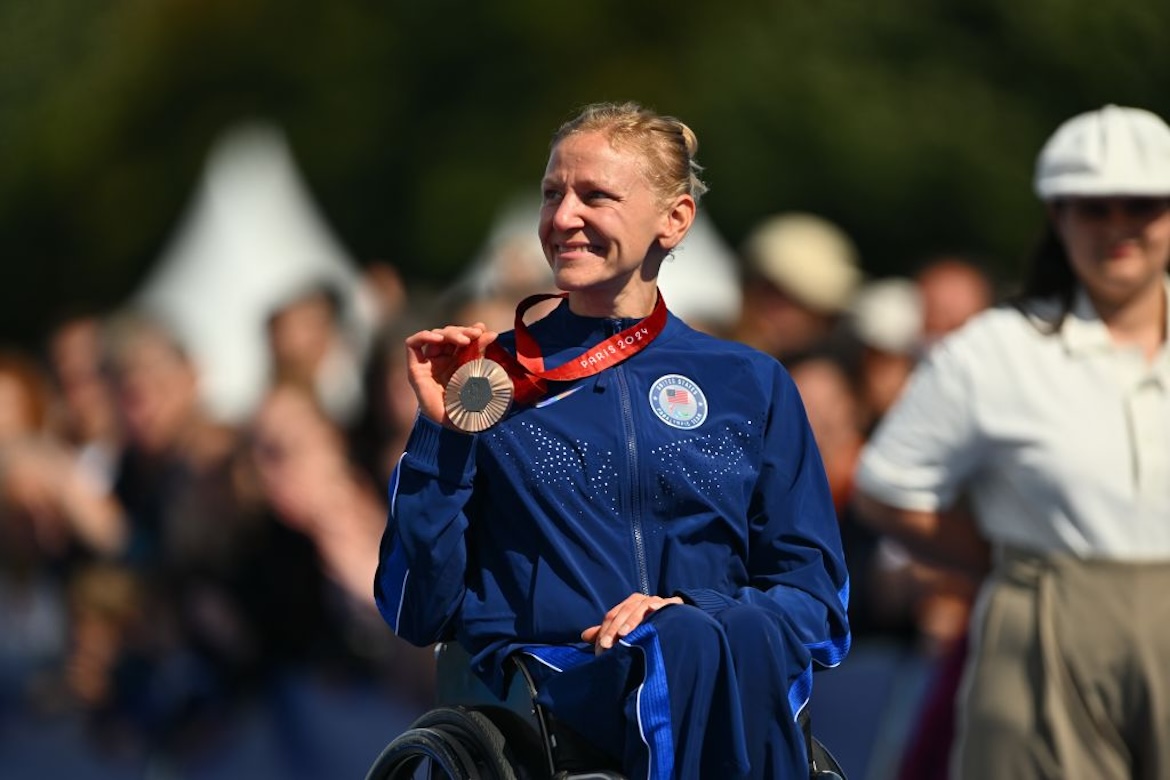As we age, we often start waking up with aching backs, stiff hips, and creaky knees. We typically chalk this up to the passage of time and not being as spry as we once were. But in reality, a loss of hip mobility could be to blame.
According to mobility experts Juliet and Kelly Starrett, DPT, there’s a simple drill they like to call “The Couch Test” that can tell you whether your hip mobility is in need of improvement.
The husband-and-wife duo run a mobility coaching company, The Ready State, to help “everyday athletes enjoy better movement, agility, and strength—with less pain and more protection against injury,” according to the website. And they recently co-wrote Built To Move: The Ten Essential Habits to Help You Move Freely and Live Fully, which is meant to serve as a guide for those looking to learn the importance of mobility, with step-by-step instructions on how to implement certain strategies and stretches.
Built To Move — $19.00
Originally $28
Shop Now
Of all the muscle groups the Starretts cover, if they had to pick just one area of the body to focus on, it’d be the hips. “We’re obsessed with hip extension—being able to get into a lunge-like shape,” Kelly says. “We feel like there is a dearth of hip extension in the universe right now.” Yet, he adds, they feel that movement is the antidote to our modern lifestyles where we do a lot of sitting. “If we had said, ‘Kelly, what is the one thing you think would transform society?’ I think it’s the couch test.”
What is the couch test?
This seemingly simple self-assessment reveals the state of your hip mobility, particularly in terms of extension. “And when I say hip extension, I mean taking the hip behind the body, so the knee travels behind the hip joint in a position like a lunge,” Kelly says. “The problem is most people don’t spend time in these shapes where we’re near our end-range position.”
The reason? The older we get, often, the more sedentary most of us become.
“It’s very possible to spend a whole lot of time as a modern person never really touching hip extension, and it’s one of the reasons why when adult people go and try to sprint for the first time they can be shocked at what happens to their bodies at high speed in these positions that they don’t touch very much,” Kelly adds.
That’s why he created the couch test, an isometric hold that, while simple in appearance, can actually be much more challenging to execute.
How to Perform the Couch Test
Step 1: Stand in front of the couch with your back to the seat. “Raise your right leg behind you, bend the knee, and tuck it into the seat of the couch where the back and cushions meet,” Kelly instructs. “Rest your shin on the back of the couch, toes pointed.”
Step 2: Lower into a lunge. While maintaining an upright torso and keeping your left foot flat on the floor, Kelly says to bend your left knee, as if lowering into a lunge.
Step 3: Squeeze your butt. While holding the bottom of the lunge, with your right knee pressed firmly on the seat of the couch with your shin against the back of it, squeeze your butt and hold for five slow, steady breaths, Kelly instructs. “Then relax your butt as you exhale to a slow count of five,” he adds, noting to repeat the process five times before switching sides.
If this sequence is easy for you, Kelly says to move on to the intermediate couch test position: Rather than placing your left foot on the floor in front of the couch, step it up onto the seat of the couch, bending that left knee into a 45-degree angle.
If you’re still looking for more, it’s time to move onto the floor version of the couch test—which the Starretts dub the most effective, most advanced position for determining hip mobility. Watch it in action here:
What the couch test reveals
While the couch test—and even the floor variation—may not seem that difficult, when actually performing it, you may be surprised by your body’s limitations.
On one hand, the couch test reveals our current hip mobility. On the other, it highlights glute function (or lack thereof). Both of these things play a vital role in our daily movement. They can affect how we sit, stand, and bend, and can be responsible for the level of stiffness and pain we feel while doing those movements, and existing in general.
While you can absolutely do stretches and exercises to loosen and strengthen those areas for better mobility, Kelly says that even by holding the couch test position as best you can, over time your body will adapt.
“Ultimately, the most important thing you can do is to spend time in this isometric shape—to have the butt squeezed, to be active and breathing in this position,” he explains. “That will begin to load those tissues appropriately and teach your brain that this is a position of value.”
So, the next time you feel like your lower back is tight or like you can’t sink into a squat the way you used to, you know what to do. “One of the things we love about this test and practice is that they’re really one in the same: In order to get better at the test—and feel better in your hips—you actually have to practice the test,” Kelly says.







